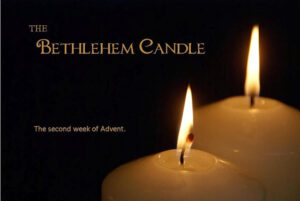Our Advent journey is so rich in meaning that themes keep adding through the Readings.
Today’s First Reading is taken from the Book of Baruch (5: 1-9), an anonymous author who had possibly assumed the name of Prophet Jeremiah’s scribe Baruch ben Neriah. The text announces the final restoration of Israel, her liberation and return from exile. There is a reference to the change of the name Jerusalem, in line with what the Prophet Isaiah had announced: ‘Peace of justice, and honour of piety’.
The city’s new appellation represents the joy experienced by returnees from the Exile, now assembled there to begin a new journey. Similarly, we who are exiles in this world see a new promise, a new light, a new hope. Jesus is to come again this Christmas and at the end of time, bringing peace, justice, honour and piety. And we will begin a new journey towards Heaven, the Eternal Jerusalem, where we belong.
The Gospel (Lk 3: 1-6) suggests that we too should assemble this Advent and embark on a new journey. It is metanoia, our journey of conversion and transformation. This cannot be said better than in the memorable words of Isaiah, with reference to the future St John the Baptist: ‘The voice of one crying in the wilderness: Prepare the way of the Lord, make his paths straight.’
We are never alone on our journey. Our Lord walks alongside, and whenever necessary carries us on His shoulders. That is how He makes our burdens light. He fills every valley, flattens hill and mountain, makes the paths straight and smooth, to ensure that we see the salvation of God – reach Heaven. This is our journey’s ultimate and noblest goal.
Let’s think of how our journey toward Christmas has been like thus far. Have we examined our conscience, confessed our sins (at the very beginning, not end, of Advent), prayed and asked for pardon? Advent is not a time of merriment in anticipation of Christmas. In fact, it is a penitential season, a ‘little Lent’.
‘Advent used to be forty days but was formalized to four weeks, in the ninth century, which is why we now have the four Sundays of Advent. The Mass itself assumes a more sombre tone during Advent. The priests wear violet vestments, as they do during Lent, since purple is the liturgical colour that signifies an attitude of repentance and sorrow for sin. The Gloria is also removed from the beginning of Mass during Advent, just as it is during Lent.’[1]
Though both Advent and Lent are times of preparation for Christmas and Easter, respectively, the essential difference is that Advent has no Passion Week. The penitential observances of Advent always have a festive character to them, which is why the Alleluia is retained. It is sad that we are tempted to pass over the penitential aspects of Advent and focus on the festivity of Christmas.

Vis-à-vis our secular culture, therefore, St Bernard of Clairvaux (1090-1153) drives home a point. The mystic co-founder of the Knights Templar says: ‘Consider Who He is that comes, whence He comes, to whom He comes, for what end He comes, when He comes, and in what manner He comes. This is undoubtedly a most useful and praiseworthy curiosity, for the Church would not so devoutly celebrate the season of Advent if there were not some great Mystery hidden therein.’[2]
In light of the above, it is significant that St Paul bore the same joyful sentiments with which Baruc celebrated the return of the exiles to Jerusalem. He sings a paean to the conversion of the Philippians. Not one to bask in past glories, the Apostle to the Gentiles urges them thus: ‘This I pray, that your charity may more and more abound in knowledge, and in all understanding: That you may approve the better things, that you may be sincere and without offence unto the day of Christ, filled with the fruit of justice, through Jesus Christ, unto the glory and praise of God.’
There is no joy without prior conversion. May the second Advent candle, called Bethlehem Candle that represents Peace, remind us of Mary and Joseph’s journey from Nazareth to Bethlehem before the Nativity. She was carrying the Prince of Peace. Let us, who are filled with a renewed, transcendental hope this Advent, embark on a spiritual journey that will better prepare us to receive the Light of the World who is Peace Incarnate.
Banner: https://shorturl.at/QtaWi
[2] ‘On the Advent of Our Lord and its Six Circumstances’, in Sermons of St Bernard on Advent and Christmas, p. 4. https://shorturl.at/limFm
Thank you, Óscar. As always, rich with references and thoughtful reflections.
A Request, if I may – it would help if you could use a larger type, please. I have some difficulty reading this and would feel more comfortable with a larger type, if that is doable without too much inconvenience. Unless, there is a way to adjust the size on the screen, which I tried but did not succeed Thank you very much.
Dear António, my apologies for the delayed response… I’ve just come to know that the three dots on the top right hand side of the cellphone takes one to the Zoom feature. You must first log into the website. Hope this helps. Regards.
Dear Óscar, Thank you so much for taking the time to look into this and get back with the process to Zoom. I am going to explore the route you recommended
and apologize if this took too much of your precious time. Much appreciated. Happy New Year.
You’re a valued reader of my posts. You are always welcome, António! Many thanks and a Happy New Year to you and your Family